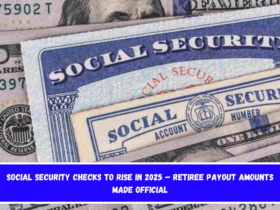The last part of giving out Social Security disability benefits for 2024 has begun. People who get money from these schemes will only get two more payments before the end of the year. One of those payments will be sent out in November. People who get help from the Supplemental Security Income (SSI) or Social Security Disability Insurance (SSDI) programs will get these funds.
When someone signs up for these disability programs, which are run by the Social Security Administration (SSA), they can get up to $698 for SSI and up to $1,539 for SSDI. The SSA figures out these payments by looking at things like each person’s work experience and personal details, like their age, the date they applied, and how much money they have saved.
Payment dates for Social Security in November
The next payment for people who get SSI will come on November 1, 2024, which is also the first working day of the month. The Social Security Administration runs this program to help people with low incomes or few financial means by giving them monthly money.
SSDI payments, on the other hand, are based on the person receiving them’s birthday, which means that payments are often spread out over the course of the month.
It’s important to know that SSI and SSDI are not the same thing, even though they are both run by the Social Security Administration. There are different requirements to join each program, and the amounts given depend on a number of things. The SSA makes sure that these payments are sent out on time, so recipients can be sure that they will get their help every month.
Who is eligible for SSI benefits:
- The Supplemental Security Income (SSI) program is intended for individuals who, due to limited income and resources, require additional financial assistance to cover their basic needs. The eligibility requirements for this aid in 2024 are as follows:
- Be 65 or older, or be blind or have a recognized disability.
- Have monthly income below $1,971 for a single person or $2,915 for couples.
- Not exceed a countable resource limit (such as money in accounts, stocks, or bonds) of $2,000 for individuals or $3,000 for couples. The main residence and one vehicle used regularly are not included in this calculation.
- Be a U.S. citizen or legally residing in the country.
- Reside in one of the 50 states, the District of Columbia, or the Northern Mariana Islands. This program does not extend to residents of territories like Puerto Rico or Guam.

Characteristics of Social Security Disability Insurance (SSDI)
With Social Security Disability Insurance (SSDI), people who are disabled and can’t work regularly because of how bad their situation is can get help.
In contrast to SSI, people who want to get help from this program must have worked enough in the past to be eligible for Social Security. People who are eligible for SSDI have paid into the SSA system through their income and have met the standards for work history and contributions.
For someone to be qualified for SSDI, their disability must meet certain criteria for severity and be expected to last at least 12 months, or in some cases, it must be likely to end in death. This condition makes sure that the program helps people with serious disabilities whose limitations have a big and long-lasting effect on their work life.
Also, the amount of an SSDI benefit depends on the person’s past of contributions. This means that people who have worked longer and made more money get bigger benefits.
Key differences between SSI and SSDI
The goal of both SSI and SSDI is to help needy people by giving them money, but there are interesting differences between the two programs. SSI is based on financial need and doesn’t require a past of work. This makes it a form of social support for people who don’t have much money or aren’t actively looking for work.
On the other hand, SSDI is for people who have worked and paid into Social Security. It makes sure that disabled people who have been disabled permanently or temporarily can get financial help.
When are the next payments scheduled?
Both plans have set payment schedules set by the SSA. People who get SSI will get their next payment on November 1. People who get SSDI should look at a calendar and use their birth date to find out when they will get their money. Millions of people depend on Social Security payouts to cover their daily costs, and the Social Security Administration makes sure that payments are made on time every time.
Also See:- How to receive the $1,600 or $6,400 stimulus check











Leave a Reply